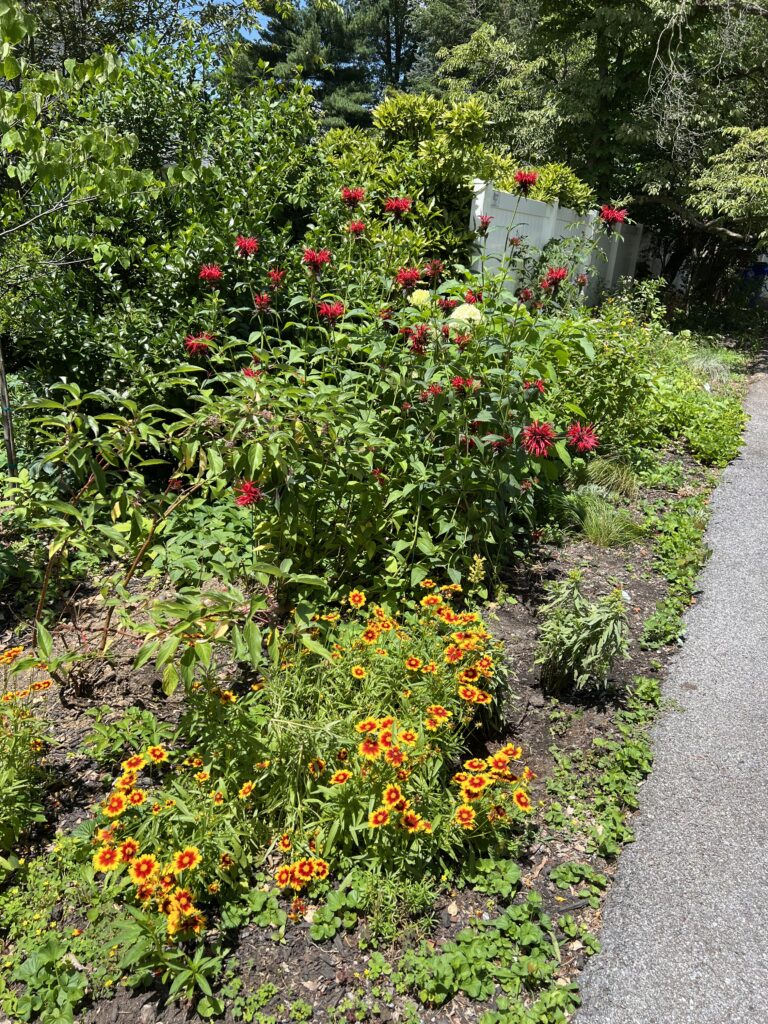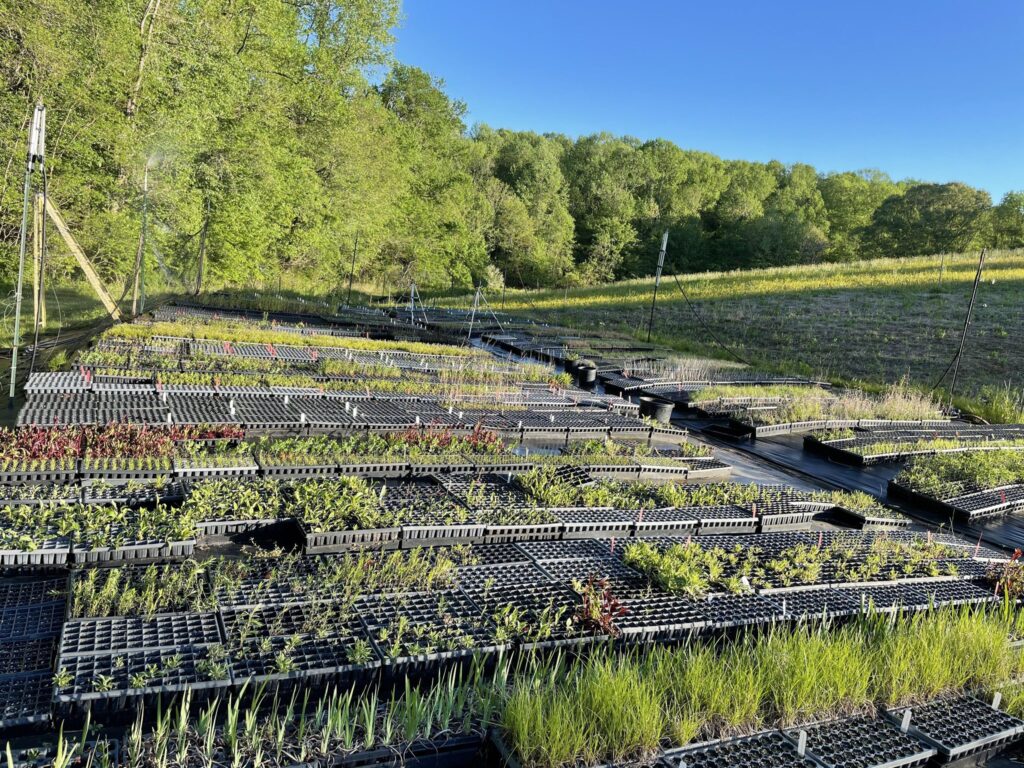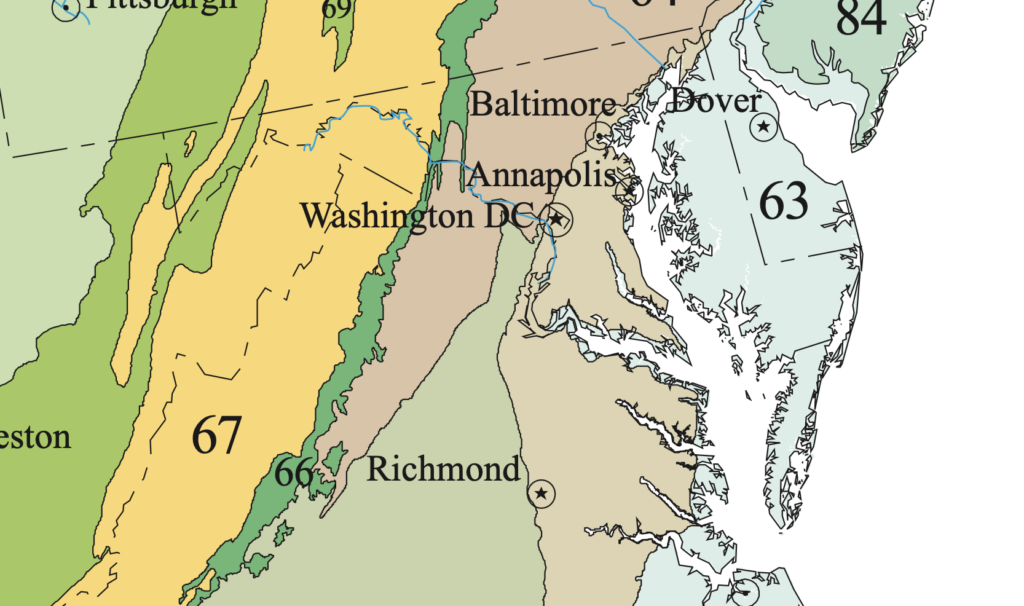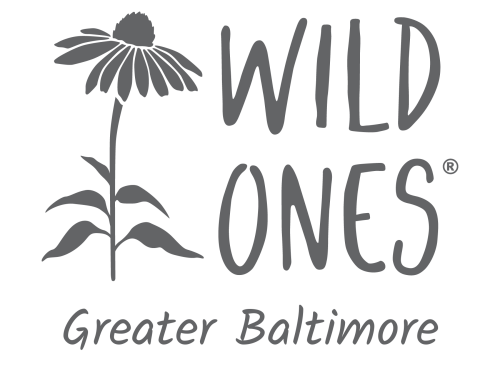Learn about what other native plant resources are available to you on your journey to expand your knowledge and garden plantings. Please contact us if you would like to help!
Do you know someone new to native plants? Here is a Reading List compiled by Wild Ones to help start them on their journey.
Where do I begin?

First of all, congratulations on what is sure to be a fulfilling and rewarding journey. We are a community of native plant gardeners who are focused on helping our struggling ecosystems by planting native plants in our yards and communities. Through our culture’s enthusiasm for lawns and exotic plants, we gone a long way towards nearly obliterating our native flora and all the creatures who depending on them for sustenance and shelter. This is where we come in! We are here to help you restore a tiny portion of what has been lost, and it’s very easy to start.
But what if I am in an HOA that expects nothing but turf grass and a few shrubs?
Not to worry, in 2021, the state signed a HB 322 into law allowing low-impact landscaping in the yards of folks that live in an HOA governed community. It defines low-impact landscaping as “landscaping techniques that conserve water, lower maintenance costs, provide pollution prevention, and create habitat for wildlife. Such techniques include bio-habitat gardens designed to attract wildlife and pollinator gardens designed to attract pollinator species.”
The “Mullet” Yard
Cautious gardeners may be more comfortable with a style of garden modeled after the much ridiculed “mullet” hairstyle of the ’80s, with the business in the front and the party in the back concept. You can keep your front garden more orderly with lots of definition via crisp edges, decorative fencing, mulch or stone pathways or mowed grass edges. In the back you can experiment more and utilize taller native plants that are closer the to the flight paths of butterflies.
How do I get rid of my turfgrass?

There are a few techniques, but the simplest one is to cover your grass with a thick layer of mulch, or chips (which tree companies will provide, or “drop” for free. You can also put down several layers of newspaper or plain cardboard (no glossy coating or colored ink, but black ink ok) under the chips, for added suppression of non-native or invasive plants. Another method is to dig and flip your turf grass, and plant into it, then cover with mulch. Landscape cloth is generally not recommended because if you don’t remove it in a timely manner, plants will grow into it, making it very difficult to remove down the line.
Before you dig, call 811
Calling 811 will notify all appropriate utility companies of your intent to dig. You can also contact Miss Utility online at missutility.net. One thing you definitely do not need to do is apply soil amendments or till the soil. If you site your native plant correctly, paying attention to soil and sun preferences, it should do well.
I have heard of “No Mow May”. Should I just let it grow long?
This sentiment represents a really important larger goal, that of reducing the amount of turf grass you have. Certainly mowing less (gas mowing equipment is not regulated pollutes a shocking amount) is a worthy aim. However, in reality, since turf grass is non-native, you just have a lot of long non-native grass that will be difficult to plant within, and woody plants will keep coming up, which may not be what you want. You are better off marking and carving out smaller garden beds that will be manageable for the amount of time you have to tend it until you have enough density of plants so that opportunitic invasive plants cannot as easily get a foothold.
Where do I find native plants?

The best place to purchase native plants is at a native plant nursery. You will find more knowledgable staff that can help you choose the right plants, and will not accidentally purchase a plant that might be native to North America or beyond, but not native to your local eco-region. Why is this important? The goal is to find plants that have been ethically sourced from your local region. This means that are perfectly adapted for your soil conditions as well as the climate. Some Native plant nurseries that we like are:
- Kollar Nursery (MD/PA border)
- Herring Run Nursery (Baltimore)
- Chesapeake Natives (Upper Marlboro, MD)
- Ecoplantia (Frederick, MD)
- Bona Terra (Friendship, MD—often has seedling give-aways)
- Toad Shade (NJ—will ship native seeds)
- Earth Sangha (NOVA)
- Wood Thursh Nursery (VA)
Online Sources are:
- Izel Native Plants
- Direct Native Plants
- My Home Park (includes a garden plan)
What is my Ecoregion?

If you are in the Baltimore area, you are probably in one of the piedmont ecoregions, known for having clay soil. Not to worry, our local native plants have adapted for clay soil, so no soil amendment is necessary. If you are nearer the coast, you might be in one of the coastal plain ecoregions, which tends to have plants adapted to sandy soil or the presence of salt (people outside of the coastal plan ecoregions may choose a plant from this area when planting near a roadway that may be salted in winter). If you are closer to the mountains, you may be in one of the mountain ecoregions. Find your ecoregion.
Helpful resources for determining which plants are native for your ecoregion
We recommend two stand out sources. Flora of the Southeastern U.S. and the Northern Virginia Plant Atlas. Two apps that are very useful are FloraQuest, which is a mobile friendly version of Flora of the Southeastern U.S. One of the top plant ID apps in terms of accuracy is PictureThis. Using this app will help give you an idea of what might already be existing in your yard. It has a map that will also tell you if it is an invasive plant. The app iNaturalist is one of the best for contributing your sightings to their extensive database, and also to get an expert confirmation of the plant you have found.
Do I have to go 100% native and get rid of my favorite non-native plants?
Definitely not! Beloved entomologist, author and popular speaker Doug Tallamy advises that to get a real benefit ecologically, you should aim for at least 70% native plants. That leaves a lot of room for you to keep some of your favorites, as long as they aren’t considered invasive.
